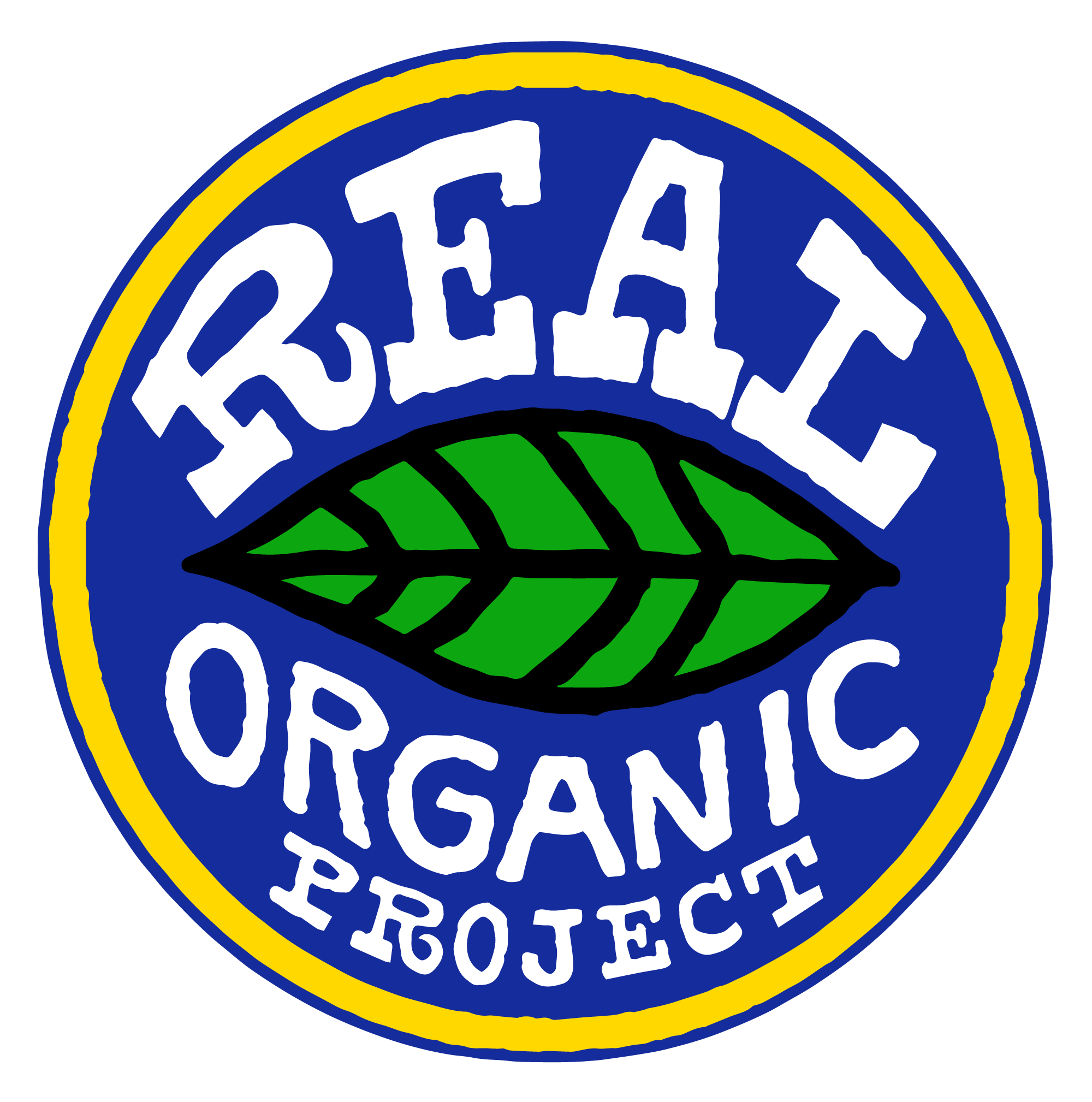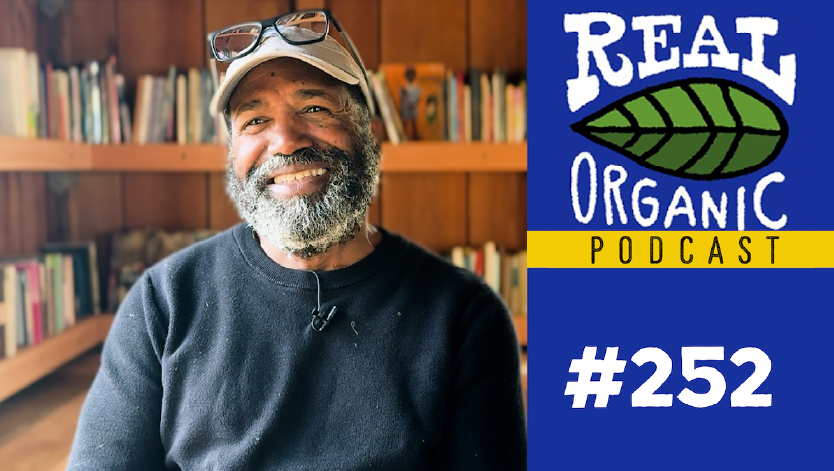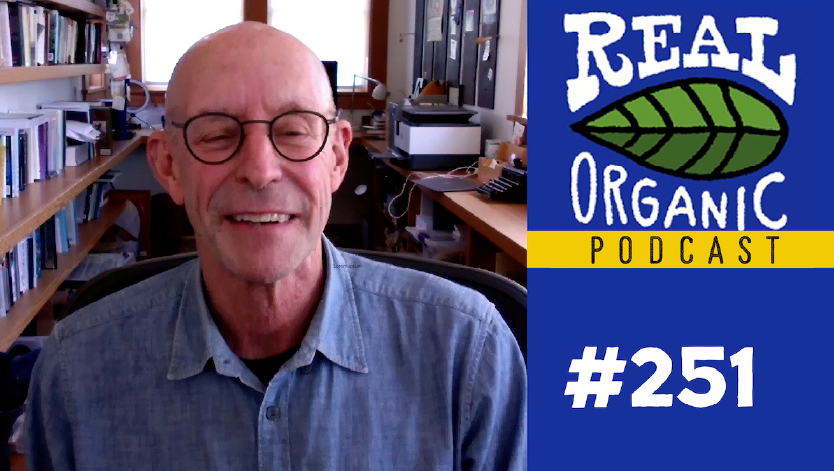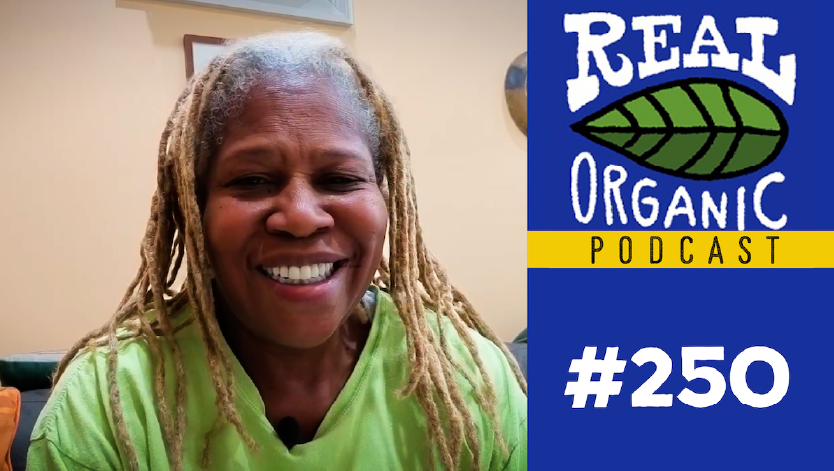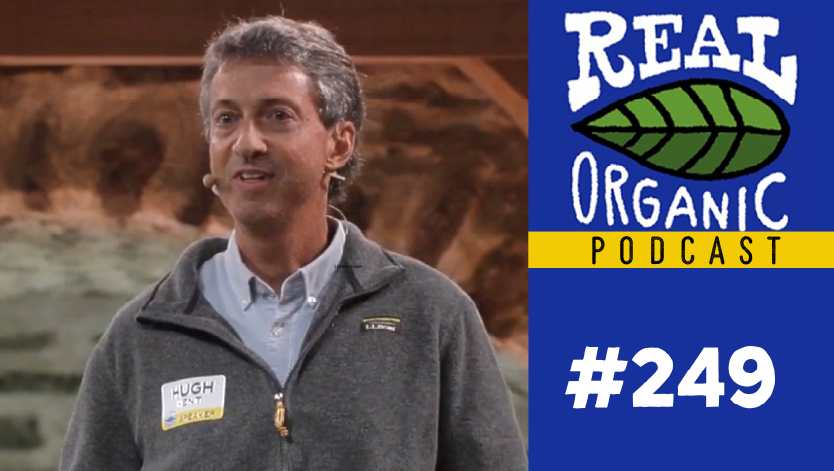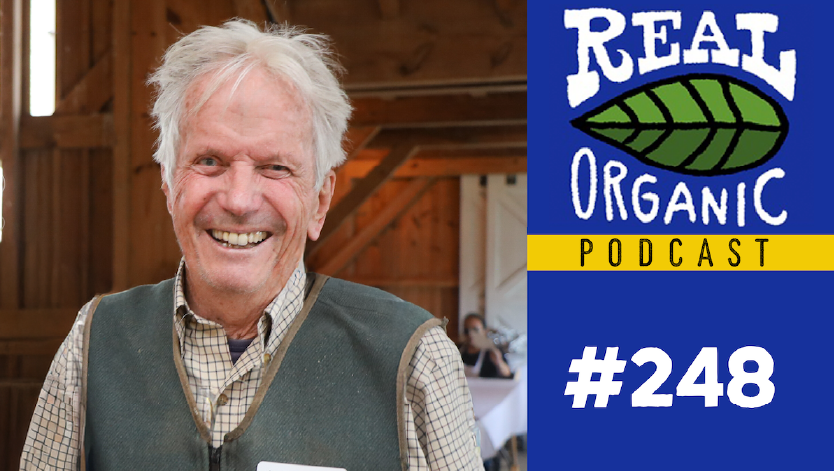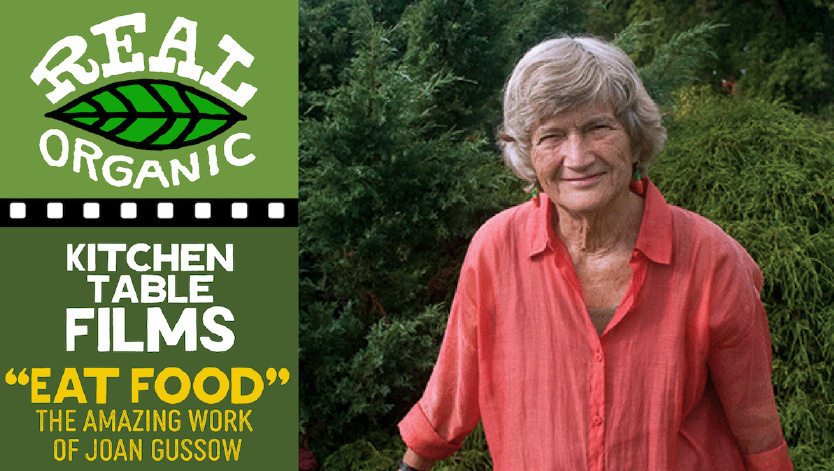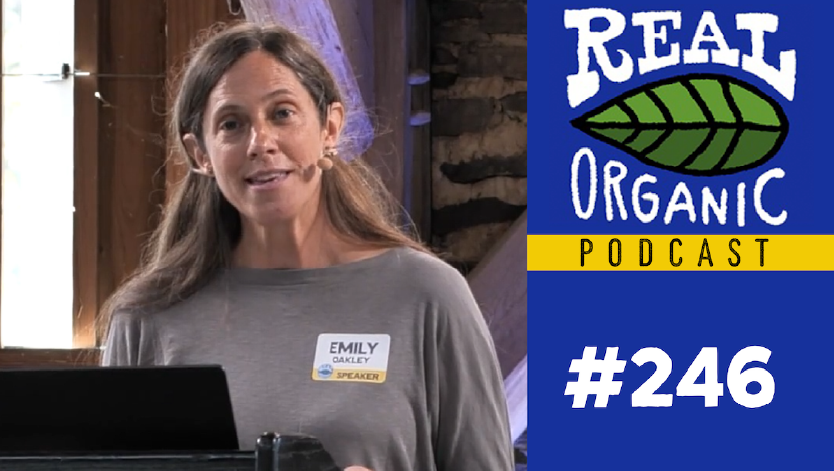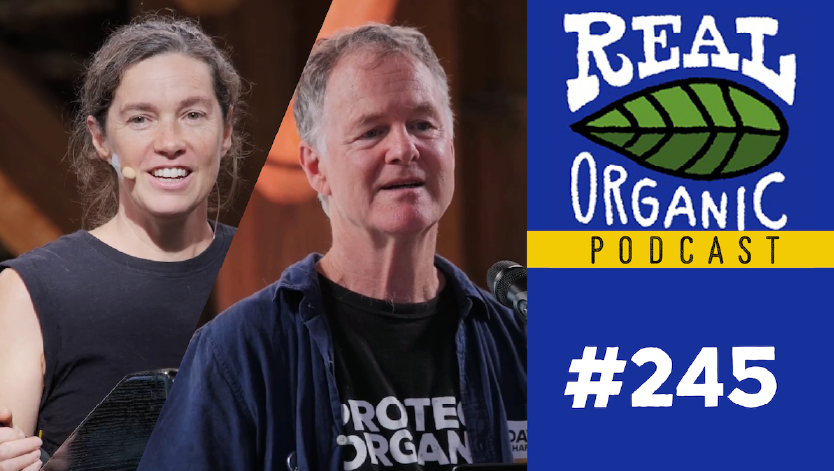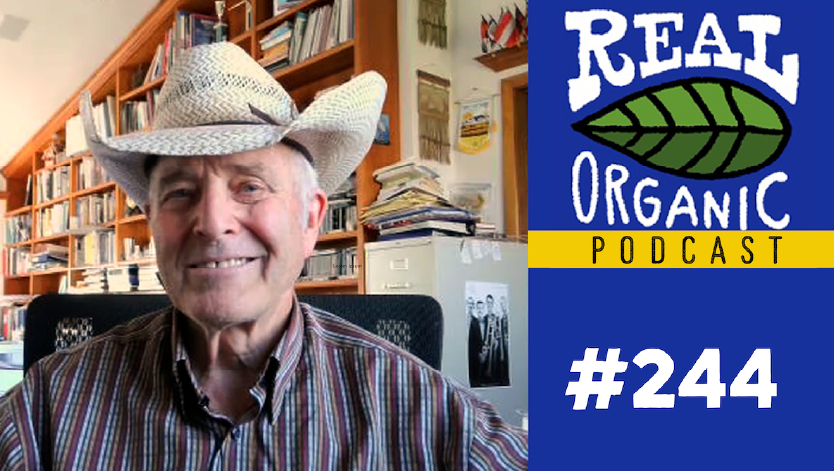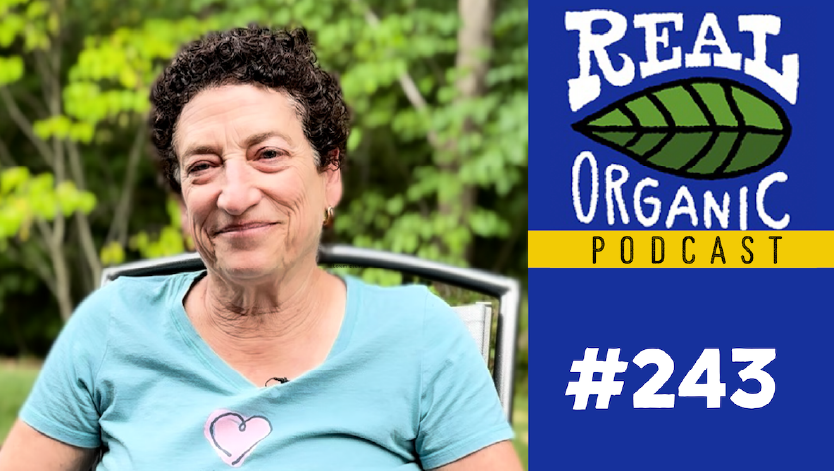Episode #206
Do Hydroponics Belong In Organic? Anthony Suau Interviews Dave Chapman
Real Organic Project co-director Dave Chapman breaks down the quiet storm that’s changed the meaning of USDA organic. From blueberries grown in bags to Driscoll’s public denials, he exposes how hydroponic farming slipped past the law—and why it’s not just a farming issue, but a fight for integrity in our food system. “Organic has always been about feeding the soil,” he says. But as the USDA waters down the standards, farmers and eaters alike are left asking: can we trust the label anymore? This powerful conversation pulls back the curtain on the hydroponic organic debate and the corporate takeover threatening the heart of the real food movement.
A must-listen for anyone who believes healthy soil makes healthy food.
Anthony Suau: 1 0:01
Hi, I’m Anthony Suau, the director of the award winning documentary, Organic Rising. We are releasing a free addendum to the film, an interview with Dave Chapman, the co director of the Real Organic Project. We sat down with Dave a few months ago at his farm in Vermont, and he explained to us how and why the Real Organic Project was formed. Dave’s interview opens with the USDA National Organic programs, handling of the hydroponic issue from 2010 to 2017 today, hydroponic producers can use the USDA organic label without any further identification for the consumer. Organic rising feels that consumers have the right to know whether their food was grown in soil or not. This label must remain transparent. We also suggest that you watch the full documentary organic rising prior to watching this interview, as there are terms used in this interview that are fully explained in the documentary. We will list the link below. Organic rising is dedicated to helping consumers understand what our labels represent. We plan to do more interviews to explain the most relevant food labels you encounter when you shop.
Dave Chapman 1:21
Real Organic Project actually came out of a years long struggle around the question of certifying hydroponic as organic. The hydroponic issue started in 2010 that’s when the National Organic Standards Board passed a recommendation that hydroponic could not be considered organic, and when they passed it, it passed 13 to one with one abstention. So it was overwhelming vote. At that point. There was essentially no hydroponic production being certified as organic. But within the next two or three years, there started to be quite a lot, and it was coming primarily from blueberries and secondarily from greenhouse tomatoes, the blueberries, nobody knew about for quite a while. It was done on the down low, but the tomatoes, it became fairly clear fairly quickly. This was in opposition to the law. Was in opposition to the recommendation. How could this be? Who’s deciding this? So once again, we went to the USDA, to the National Organic Program, and said, Where are you coming up with this? I don’t get it in 2015 there abouts there was a movement that sprang up truly grassroots. It was called keep the soil in organic it was just a bunch of farmers dissenting from what was happening in the federal agency, and it ended up leading to 17 rallies across the country. I served on the USDA hydroponic Task Force, five of us out of 15 who were there to represent soil, and the other 10 were there to represent the less than 1% of American farmers who were growing hydroponically. We went through months of meetings, and at the very last few weeks, the representative from CCOF said, Well, I have a case study I’d like to present in. We were like, great, and it was driscolls, and they were growing hydroponic berries. And we were all like, driscolls is growing berries. We didn’t know driscolls was a secret. And all of a sudden, driscolls had said, We better get behind this. It’s going to come out. We looked at it, we said, this is a perfect example of a pure hydroponic operation. And should a pure hydroponic operation be organic? So this is very important for all of us. First of all, because what does organic mean? Is organic just about the prohibition of pesticides. Because I would say, No, that’s not what organic means. That’s a good thing. And organic includes that, let’s not use toxic chemicals in the production of our food, and let’s not use chemical fertilizers, because it does bad things to the life in the soil. And organic has always been about feeding and protecting and encouraging the life in the soil, and the belief that that life in the soil will then produce food that is superior, nutritionally, environmentally, taste wise, everything about it is going to be better. So that’s what organic really means. It’s what it means in the rest of the world. It’s what it means to most organic farmers in America, but it’s not what it means to the USDA and it’s not what it means to the trade groups that are protecting these large corporations that are now flooding our markets with less expensive products, and as a result of that, they make it almost impossible for the farmers who are doing it right to survive in that marketplace. So in 2017 all of this confrontation and agitation and conversation came to a head around the National Organic Standards Board meeting in Jacksonville. Florida to decide whether or not you would allow somebody to grow something like a tomato or a blueberry if you gave no more than 20% of the nitrogen that plant needed as a liquid feed. We said, okay, but you can’t just give it limitless liquid feed, and we just picked nitrogen is one and say you can’t get more than 20% of the nitrogen that plant needs. Well, if that had passed, that would have outlawed hydroponic production, because they get all of their nutrients from a liquid feed. That’s what hydroponic means. Organic agriculture is going to get the life in the soil exploding, and they’re going to get those nutrients from the soil. That’s what organic agriculture is. This proposal was an attempt to limit production that was hydroponic and still allow somebody to grow in a container. It was defeated by a vote of eight against and seven for. It was quite disturbing to hear their reasons. One member, who was a Native American, said that she was voting against this because of her people’s deep respect for nature and natural processes, and it was like you just voted for hydroponic What are you talking about? Another person did it. She cited the violence against young black people in Ferguson, Missouri, again, I’m like, what are we talking about here? It turned out she was running a hydroponic program, training them to be hydroponic growers. But we didn’t know that all this happened, and we lost. People were crying, and people called me from California crying. It was a huge moment. I wrote a letter called the night they drove organic down, because I went, This is it. This is our moment where we lost, we lost, and what do we do now when it’s abundantly clear, and just to say, this vote completely reversed the vote of seven years earlier, there was no dispute in that vote. Driscoll testified long and hard at this meeting. They wanted hydroponic to be allowed. 60 farmers went to this meeting from all over the country, and they testified brilliantly. They were so good, and they did not change one mind on that board because they had been lobbied hard. CCOF California, certified organic farmers testified many times that they wanted it allowed too, but they wanted it to be labeled hydroponic, organic, and they asked me to support that. I felt I couldn’t support it because are we going to now have a label for confinement organic, CAFO, organic? I said, Where does this stop? It’s not organic. I would say, let’s go with the standards of the EU. In the EU, hydroponics are prohibited. No question. Their law is very simple. Must be grown in the ground, in the top soil, with no barrier between top soil, subsoil and bedrock. Their laws around animal confinement are stricter. They don’t allow the kind of CAFOs that we have in this country in organic. Their enforcement around grain fraud is much stricter. All of these things which are excused in the US saying, Well, hey, everybody deserves organic. And what that means is we need to make organic cheaper. This is exactly the justification for all the sins of the conventional food industry without watering down the standards. Organic is becoming more popular in the EU than in the US, and a much bigger percentage of their land is certified organic than in the US. The US is like 1% I think in the EU it’s like 10% they’re aiming for 25% by 2030 right now, America is the only country in the world that certifies hydroponic as organic. Certifies that confinement CAFO livestock rearing as organic. When I served on the USDA hydroponic Task Force. One of the proposals was that we create a distinction for hydroponic, organic, a separate label. All of these hydroponic growers were said, Fine, we don’t care. We just want the organic label. That’s how we’re going to make our money. And I said, Okay, great. So we all agree we’re going to call it hydroponic organic. Well, maybe we could call it container organic. They know that eaters don’t want hydroponic so they’ll never allow that through the two biggest hydroponic producers in America of falsely certified organic are driscolls and wholesome harvests. Wholesome Harvest is tomatoes. Driscolls is berries. And for driscolls At this point, it’s primarily blueberries, but strawberries are coming fast, and if you write them and ask them, do you grow anything hydroponically? Yeah, they’ll write back and say, No, we don’t, and it’s posted right on their website. Driscoll says we do not grow anything hydroponically. So what they’ve done, it’s, is redefine that what the word hydroponic means. So they’re limiting hydroponic to be something where the roots are in a tube and the nutrient solutions running over them, and that is one kind of hydroponic nobody grows hydroponic tomatoes or berries that way. They grow them in containers filled with shredded coconut husk, and they put a liquid feed that drips through that. And that’s exactly what the hydro growers do. There’s no difference, looking at a picture between a chemical hydro and a so called Organic hydro you can’t tell the difference. They look exactly the same, and all you see is this glaring shock of white plastic. Everything is in a bag. Everything is covered. It’s very strange. If you look at a picture of a real hydro tomato operation, you will be confused for a long time what you’re even looking at you
